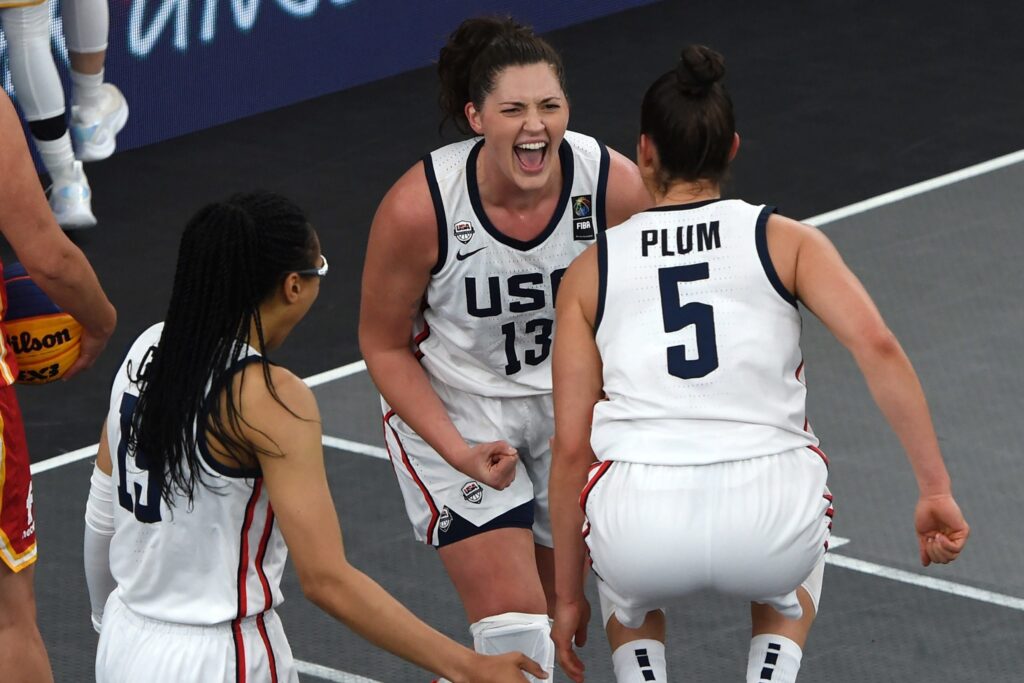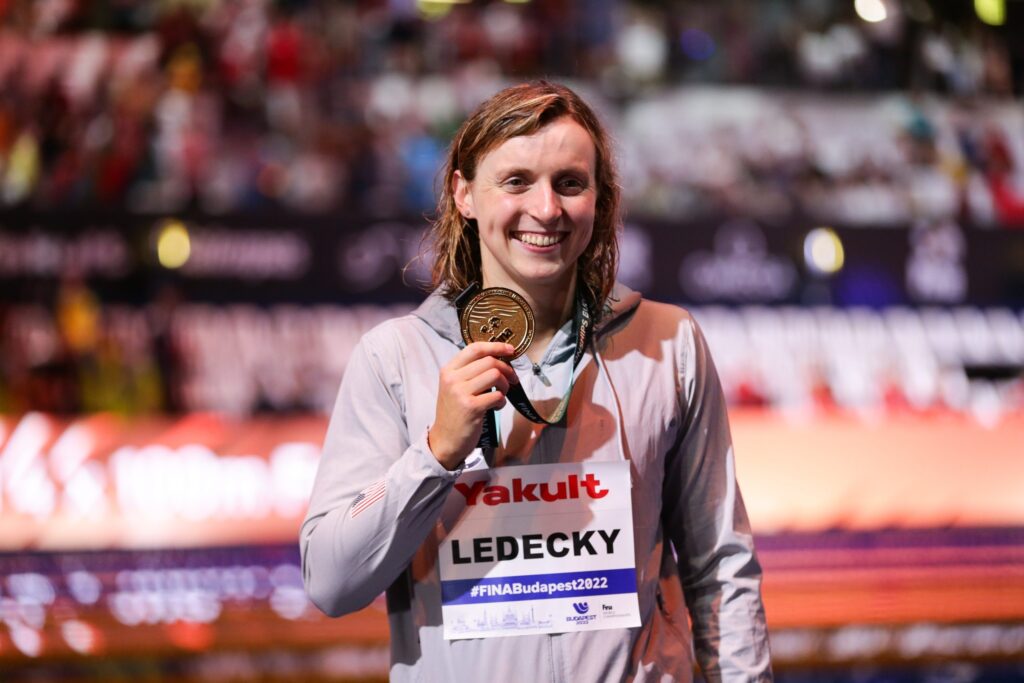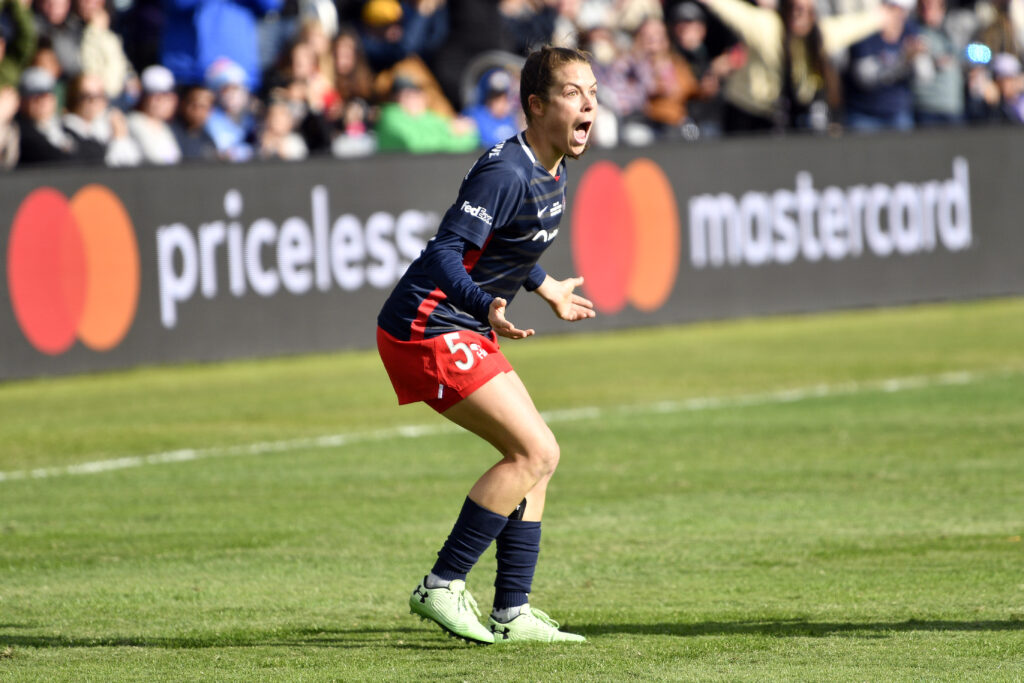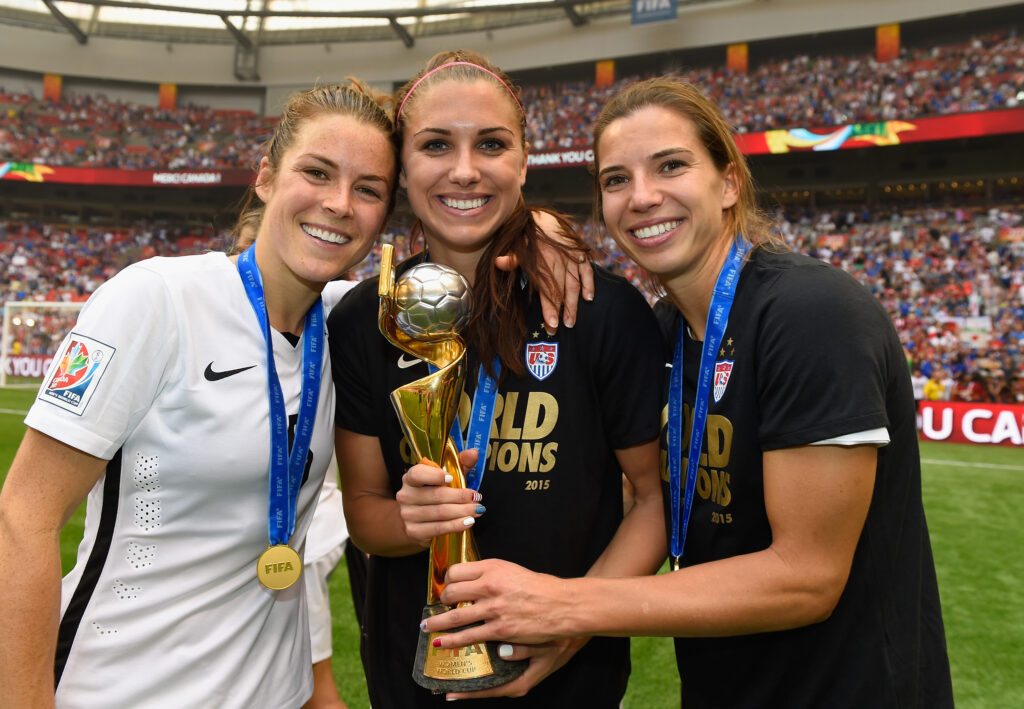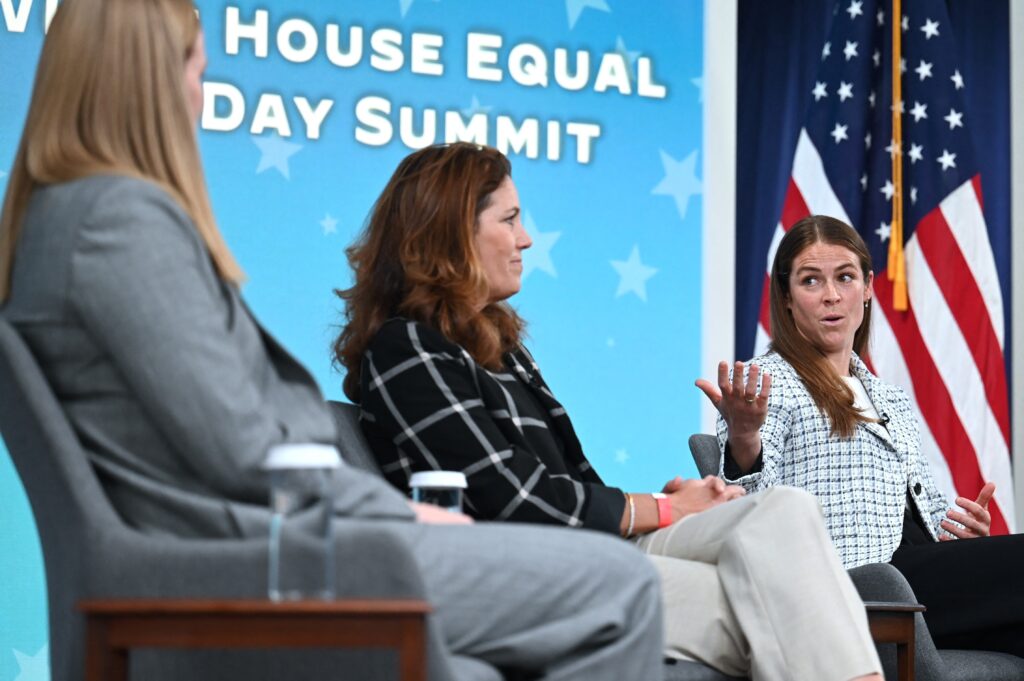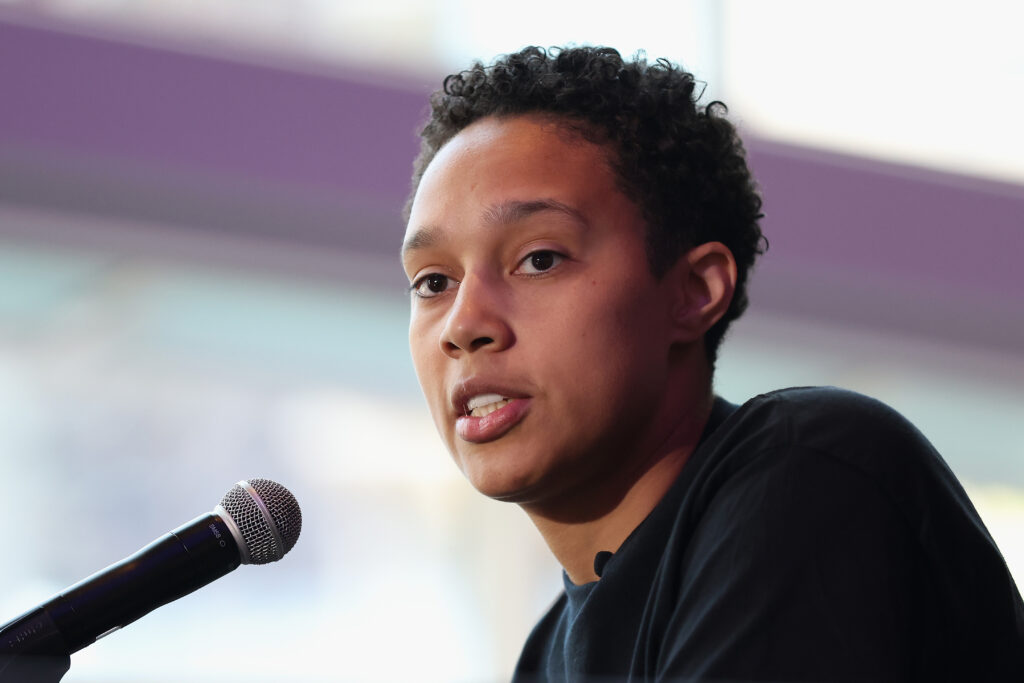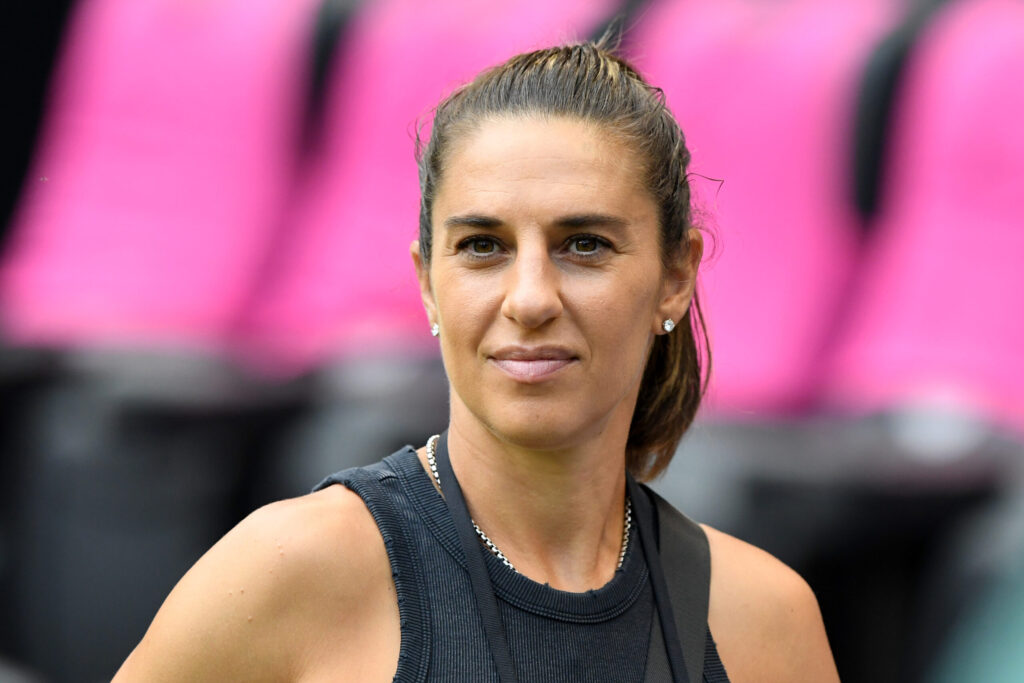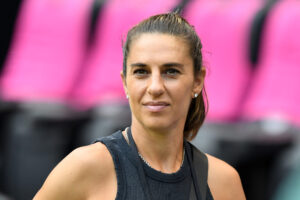It used to conjure up images of kids in homemade jerseys, outdoor courts with the sun beating down on hot pavement, and players past their prime with sore knees and creaking joints not capable of running full court.
Maybe it was something you did to fill a weekend or to help stay in shape for 5-on-5. Or maybe, you took your kids to a tournament, in hopes of tiring them out on a summer day.
Years ago, it was always an offshoot, never the main event. But that is no longer true.
Whatever your notions of 3-on-3 basketball are, get rid of them.
This isn’t your mother’s 3-on-3.
The sport is sleeker, more exciting and more well-known. It also has a different name. At the professional and Olympic levels, this type of basketball is referred to as “3×3” or, if you’re really in on the lingo, just “3x.”
Whatever you call it, this brand of basketball is on the rise. And with the United States women’s 3×3 team set to take Tokyo in pursuit of a gold medal, the momentum has only begun.
Of course, those notions of what 3-on-3 basketball is didn’t come out of nowhere, and neither did 3×3.
The world of 3-on-3 serves as a foundation for the more elite, streamlined version of the game. But while the sport has evolved into something bigger, the roots are still there, growing in their own ways.
Take Spokane, Wash., for example. It’s home to over 200,000 people, Gonzaga University and, every summer, the world’s largest 3-on-3 tournament.
For the last 31 years, downtown Spokane has closed streets and set up outdoor courts so that upwards of 20,000 people can play 3-on-3 basketball.
Executive Director, and former Gonzaga basketball player, Matt Santangelo has been in charge of Hoopfest for the last seven years. The tournament is loosely based on the Gus Macker model in the Midwest, which was founded by Scott McNeal in his parents’ driveway in Lowell, Mich.
When Hoopfest began, the goal was to bring the tradition of 3-on-3 to Washington.
And while the tournament has required meaningful dedication and resources from the Hoopfest staff, the organizers aren’t surprised that one of Spokane’s biggest money-making events is based around 3-on-3.
“I think it just makes the sport so much more accessible, for lack of a better term,” Santangelo said. “Just the nature of 3-on-3, it is a great way to learn the game.
“There are so many different levels to play at. You might be playing at the Olympic level, you might be playing at the professional level, you might be playing at the event, recreational level. The access to the sport makes it so special.”

Hoopfest has been going strong for three decades. Santangelo and his crew have managed to walk the line between traditional 3-on-3 basketball and the changing landscape of the game.
At the Olympic and professional levels, the game is played according to FIBA rules: with a 12-second shot clock, the first team to score 21 points wins; if neither team gets to 21, the game ends at the 10-minute mark, and the team with the most points is crowned the winner. Baskets count as one or two points, and players must clear the ball to the 3-point line on possession changes.
When Kelsey Plum, Stefanie Dolson, Allisha Gray and Jackie Young — who replaced Katie Lou Samuelson after the latter tested positive for COVID-19 — take the court against France on Saturday, they will be following those rules.
That leads to a fan-friendly, high-intensity brand of basketball.
“I think we are going to introduce people around the world to a new sport that they are going to really like,” Plum said in a press conference after Team USA was announced. “It’s very fun to watch. Very entertaining, very fast-paced, high intensity, very physical.”
KP for the win 😮@Kelseyplum10 x #RoadToTokyo pic.twitter.com/pzaFScRWqp
— USA Basketball 3x3 (@usab3x3) July 15, 2021
At Hoopfest, the rules are a bit different. The games are 25 minutes long and played to 20 points.
Anyone can play: men, women, kids, casual athletes and former pros. And the style of play changes based on who is participating.
“People have taken the 3-on-3 model and put different fingerprints on it and shaped it a little differently,” Santangelo said. “There are different offerings, and I think that is great. There’s not just one way to play basketball, and we get to continue to make this game more accessible.”
Claire Soulek is 10 years removed from her basketball career at Gonzaga University. Back then she was Claire Raap, and a part of the Gonzaga women’s team that made the program’s first (and only) Elite Eight run in 2011 during her senior year.
These days, she doesn’t have much time for basketball between teaching cooking, sewing, health and the occasional P.E. class to middle schoolers in Spokane and caring for her 5-month-old daughter, Kinsley. But she carves some out anyway to volunteer at Hoopfest. It’s a chance to stay connected to the game and the community where she played.
At Gonzaga, Soulek was blessed with a dedicated fan base that, she notes, not every women’s team had, especially a decade ago.
The best part, she said, was the smiling faces of little girls lining up for autographs and photographs after the games.
When they looked at Soulek, they saw their dreams playing out in front of them. And to Soulek, that is the beauty of 3×3. It’s simply another outlet for girls to learn about the game, and to be inspired to pursue basketball.
“The fact that 3-on-3 has gone from grassroots to now the Olympics, you never know what little girl is watching and is going to be like, ‘This is my sport. This is what I love. And you know what? I’m going to work hard to improve my skills and be good at it,’” Soulek said. “It just provides another opportunity for them to go further in the sport of basketball.”
📍 THE OLYMPICS 🇺🇸 pic.twitter.com/gWBAGnqgh7
— USA Basketball 3x3 (@usab3x3) July 21, 2021
Opportunities are still limited. Both Soulek and Santangelo know that.
Santangelo spent six years playing professional basketball overseas. The gap between players like him and players in the NBA is smaller than you might think.
“The degree of separation between number 6 on an NBA roster and number 10 million is really, really small,” he said. “One through five, those players are really special. And six through 10 million, they are special, too, but they can’t go to the Olympics, or maybe they can’t get paid to play basketball.”
Now, apply that same line of thinking to the WNBA. There are 30 NBA teams and 29 G-League teams. There are just 12 WNBA teams, and a total of 144 roster spots.
All it takes is a quick scan of WNBA headlines to see how many top-caliber players are cut from teams every day. Just this season, Shyla Heal, the No. 8 overall draft pick, was traded and waived.
It’s simple: Within the current landscape of women’s professional basketball, there is more talent than there are roster spots.
That’s one of the first things Alanna McDonald thought of when she was watching the 2017 FIBA 3×3 World Cup in France. Since its debut in 2010 at the Summer Youth Olympics, 3×3 has gained popularity around the world, but the United States wasn’t following the same trajectory.
McDonald isn’t a basketball player. She played volleyball at Brown and professionally overseas. Maybe that’s why she was able to recognize the potential for 3×3 that others missed: She saw it through a volleyball lens, likening it to indoor volleyball and beach volleyball. The two sports coexist at a high level and offer more opportunities for athletes to pursue the sport.
“There is so much talent,” McDonald said. “We want to make sure there are more paid opportunities for women. We want there to be expansion here in the U.S. for these super talented women.”

So, McDonald started researching. She talked to USA Basketball and FIBA. She watched countless 3×3 games and investigated how it would fit into the landscape of women’s basketball in the United States.
Then, she took her idea to Seattle Storm president Alisha Valavanis. The two are connected through Force 10 Sport Management, but when McDonald approached Valavanis at an event, it was essentially an elevator pitch.
Valavanis saw what McDonald had seen, and suddenly McDonald was in board meetings turning her concept into reality.
“We recognized there was already a gap between the opportunities for men and women, and 3×3 is a great game,” Valavanis said. “We wanted to get in on the ground floor and see if we could get it moving on the women’s side.”
In 2019, Force 10 launched the country’s first professional 3×3 women’s basketball team, with the purpose of creating a pipeline and supporting USA Basketball’s mission to qualify for the Olympics. Today, there are four professional women’s 3×3 teams in the United States, sponsored by the Storm and the Chicago Sky.
McDonald hopes that, eventually, every WNBA team will also have a 3×3 team, and she expects the sport to continue to grow at a rapid pace.
“As soon as the Olympics hit, I think there is going to be a lot of interest, a lot of hype,” she said. “That momentum is something we are expecting to sort of take off, because everyone watches the Olympics, and I think fans are really going to love it.”
That’s how movements like this get started. A casual spectator becomes a fan, and then becomes a champion of the sport. Or a little girl sees her heroes playing on TV and develops a life-long passion.

That’s what happened to Stefanie Dolson when she watched the Olympic opening ceremonies as a kid.
“I remember they had, like, these funny caps on,” she said. “And it just looked like an amazing opportunity. And that really sparked my interest.”
Now, Dolson and the rest of the USA 3×3 team will be that inspiration for someone else.
The sport of 3-on-3 basketball is going through an incredible shift. From grassroots to gold medals, the different branches of the game continue to influence each other.
In Soulek’s middle school P.E. class, there is an entire unit devoted to 3-on-3 basketball. No doubt the popularity of the sport at a global and professional level is trickling back down to kids. But if you think about it, it’s not a true trickle-down effect, but rather a full-circle moment.
Because let’s not forget where this all began. In driveways, with kids and their friends, a hoop and a ball.
